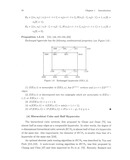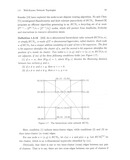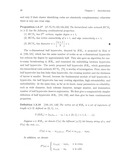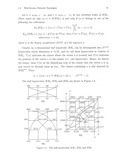Contents
Preface
Chapter 1 Introduction 1
1.1 Fundamentals 1
1.1.1 Basic of Graph and Network 1
1.1.2 Progress in Reliability Evaluation 3
1.2 Fault Diagnostic Models 5
1.2.1 Diagnostic Model Based on Testing 5
1.2.2 Diagnostic Model Based on Comparison 8
1.3 Well-Known Network Topologies 10
1.3.1 Hypercube and Its Generalizations 11
1.3.2 Star Graph and Its Generalizations 22
Chapter 2 Fault Diagnosability of Star Graph 30
2.1 Fault Tolerance Properties of Star Graph 30
2.1.1 Introduction 30
2.1.2 Structural Robustness Properties of Star Graph 31
2.2 Conditional Diagnosability of Star Graph 41
2.2.1 Introduction 41
2.2.2 Preliminaries 42
2.2.3 Conditional Diagnosability of Star Graph 42
2.3 g-Extra Diagnosability of Star Graph 56
2.3.1 Introduction 57
2.3.2 g-Extra Connectivity of Star Graph 58
2.3.3 g-Extra Diagnosability of Star Graph 68
2.4 t=k-Diagnosability of Star Graph 72
2.4.1 Introduction 73
2.4.2 t=k-Diagnosability of Star Graph 75
2.4.3 Review on Related Works 78
2.5 Remarks 80
Chapter 3 Fault Diagnosability of (n,k)-Star Graph 82
3.1 Conditional Diagnosability of (n,k)-Star Graph 82
3.1.1 Introduction 82
3.1.2 Structural Robustness of (n,k)-Star Graph 83
3.1.3 Conditional Diagnosability of (n,k)-Star Graph 91
3.2 g-Good-Neighbor Diagnosability of (n,k)-Star Graph 93
3.2.1 Introduction 94
3.2.2 g-Good-Neighbor Diagnosability of (n,k)-Star Graph Under the PMC Model 95
3.2.3 g-Good-Neighbor Diagnosability of (n,k)-Star Graph Under the Comparison Model 99
3.3 g-Extra Diagnosability of (n,k)-Star Graph 105
3.3.1 Introduction 106
3.3.2 g-Extra Connectivity of (n,k)-Star Graph 107
3.3.3 g-Extra Conditional Diagnosability of (n,k)-Star Graph 112
3.4 Remarks 117
Chapter 4 Reliability Analysis Based on Subsystems of (n,k)-Star Graph 119
4.1 Introduction 120
4.2 Preliminaries 121
4.3 Evaluation of Rn-1,k-1 n,k(p) 123
4.3.1 Computation of Lower Bound on Rn-1,k-1 n,k(p) 123
4.3.2 Computation of Upper Bound on Rn-1,k-1 n,k(p) 134
4.3.3 Approximation Rn-1,k-1 n,k(p) 134
4.3.4 Discussion 136
4.4 Remarks 138
Chapter 5 Reliability Assessment of Multiprocessor System Based on (n,k)-Star Graph 139
5.1 Introduction 139
5.2 Reliability Analysis Under Node Fault Model 140
5.2.1 Partition Based on Fixed Dimension 141
5.2.2 Partition Based on Liberal Dimension 151
5.3 Reliability Analysis Under Link Fault Model 154
5.3.1 Partition Based on Fixed Dimension 154
5.3.2 Partition Based on Liberal Dimension 156
5.4 Remarks 158
References 159
![多处理机系统可靠性分析 《多处理机系统可靠性分析》[64M]百度网盘|pdf下载|亲测有效](/365baixing/uploads/s0309/e2dbbb0ee147fab2.jpg)
![《多处理机系统可靠性分析》[64M]百度网盘|pdf下载|亲测有效](/365baixing/uploads/s0309/e2dbbb0ee147fab2.jpg)




![《细说Linux基础知识第2版计算机与互联网操作系统讲解Linux操作学习Lin》[52M]百度网盘|pdf下载|亲测有效](/365baixing/uploads/s0309/080520215deaf945.jpg)
![《Python神经网络编程Python深度学习语言入门零基础自学教材书人工智能算法视觉编》[82M]百度网盘|pdf下载|亲测有效](/365baixing/uploads/s0309/d3389966b9924dd9.jpg)
![《保证LabVIEW实用工具详解陈树学著》[43M]百度网盘|pdf下载|亲测有效](/365baixing/uploads/s0309/6e24503996a5adcf.jpg)
![《深入浅出:工业机器学习算法详解与实战》[74M]百度网盘|pdf下载|亲测有效](/365baixing/uploads/s0309/cab1f48161d3d990.jpg)